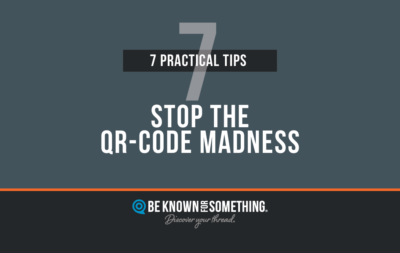I tell my kids that it’s rarely “either/or” and usually “both/and”. Then I regret teaching the axiom since Biblical “truths” contradict the slogan. Like a traffic light some admonitions require a red light or a green light; never both on at the same time.
But when it comes to finding solutions and creativity, the best answers usually require starting with “both/and”. Church communication hubs require it too. Print communications and Digital communications need to co-exist but we must be wise about how they function together or you’ll end up with over-communicating — which leads to attention fatigue.
With my 2 college-aged sons, I know if I have an important message to deliver; I try to do it in person. As a church communicator, you know that delivering a message from the pulpit gets the best attention too. But it all can’t be done that way.
For my sons, texting is the next preferred method. Leaving a handwritten note is futile. But so is sending them an email. I’d be better off taking a picture of the note and posting it on Instagram. Which is what one of our church client’s did for youth communications. They simply print one poster and post a picture of it. Then they throw away the printed poster (which would never be seen). The message then becomes shareable!
Here are 3 things we’ve learned about print communications co-existence:
- Know your Audience. Your audience always determines the communications method. Start with demographics and then consider the way they prefer to receive news. 20-somethings prefer digital, 30’s and 40’s go back and forth, 50+ tend to gravitate towards print communications (they like to print what they find online so they can remember it).
- Know the method’s limitations. Each method has limitations. Such as competition for time and other messages. Tweets need to be repeated about 6x/day in order to “catch” people, where Facebook should only be posted once or twice/day. Bulletins (print communications) need to be simplified and organized or people won’t read them. Your message needs to be delivered within the limitations of the method.
- Know the longevity of the message AND the method. Print communications last a long time but require a longer lead time to create it. Digital is instantaneous with a shorter residue (time it “hangs around”). Snapchat disappears quickly while websites retain messages for a long time. Timing of the message is critical to determine the method.
Can print co-exist with digital? Absolutely, but realize that print communications is diminishing while digital is dominating because a message can be pushed “just in time”. So let digital lead your print communications strategy. This tough balance needs to be customized based on your audience (and not your presence).




